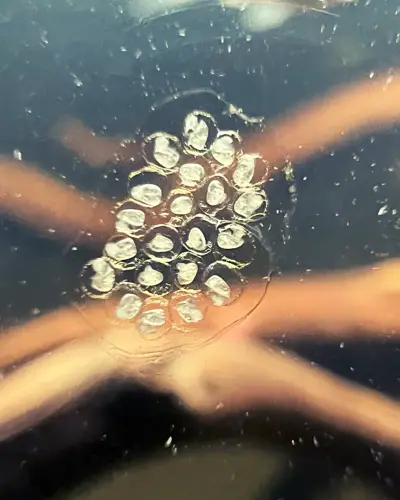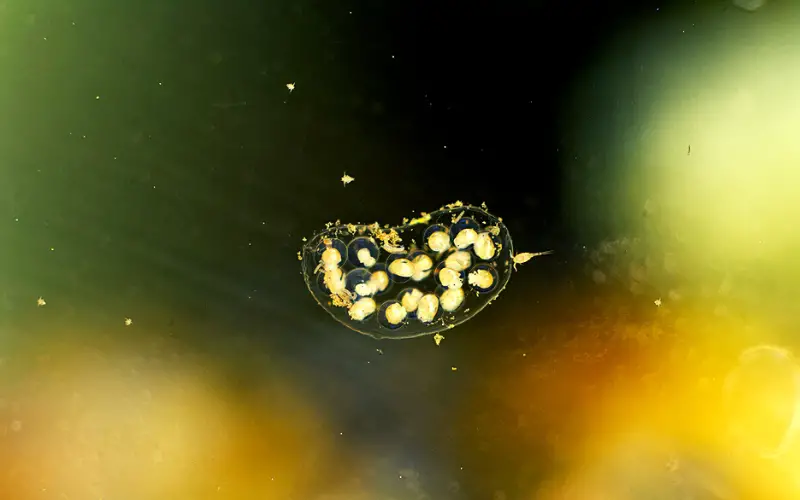How Long Do Snail Eggs Take to Hatch? Have you ever stumbled upon tiny, jelly-like clusters in your garden or aquarium and wondered when they would hatch? Understanding the hatching timeline of snail eggs can be fascinating, especially if you’re breeding them or simply curious about their life cycle.
Most snail eggs hatch within 2 to 4 weeks, depending on species, temperature, and humidity. While some freshwater snails, like mystery snails, hatch in about 10 to 14 days, land snails may take up to a month.
The process involves key stages—egg formation, development, and finally, hatching—each crucial for the snail’s survival.

But what factors speed up or slow down this process? How can you ensure healthy hatching conditions? Let’s dive into the complete timeline, explore the key stages, and uncover expert insights on successfully caring for snail eggs!
Table of Contents
ToggleHow Long Do Snail Eggs Take to Hatch in The Tank?
how long does it take for a snail egg to hatch? In a controlled environment, such as a tank, snail eggs typically take around 2 to 3 weeks to hatch. This timeline can vary depending on the species of snail and the conditions within the tank.
Factors such as water temperature and humidity play a significant role in the hatching process. For instance, warmer temperatures can accelerate the incubation period, whereas cooler conditions may extend it.

Maintaining an optimal environment is crucial for the successful emergence of baby snails from their eggs. To ensure a successful hatching process, it’s essential to monitor the temperature and humidity levels in the tank. Snail eggs require a moist environment, and any fluctuations can impact their development.
Some aquarists use heaters to maintain a consistent temperature, while others may rely on natural room temperature. Additionally, providing proper ventilation is vital, as condensation can hinder the hatching process.
By creating a suitable habitat, enthusiasts can witness the remarkable transformation of snail eggs into lively hatchlings.
How Long Does It Take for Garden Snail Eggs to Hatch?
Garden snails, a common species found in many backyards, also have a hatching period of about 2 to 3 weeks. The time it takes for these eggs to hatch can depend on environmental factors such as soil moisture and temperature.
When the conditions are ideal, baby snails emerge from their eggs prepared to crawl and explore their surroundings. These small snails are often around 1-2 millimeters in size and are equipped with a soft shell.
During this hatching period, it’s crucial for the area where the garden snails lay their eggs to remain damp but not overly saturated. Snails often lay eggs in soil, under leaves, or in other protected areas to shield them from predators.
As the eggs mature, they develop a tiny shell that will protect the baby snails once they hatch. Observing garden snails can provide valuable insights into their breeding habits and the conditions needed for successful reproduction.
What Does a Newborn Snail Look Like?
A newborn snail, often referred to as a hatchling, typically appears as a tiny, soft-bodied creature with a delicate, translucent shell. Initially, the shell is quite soft, making the baby snail vulnerable to environmental factors and predators.
As snails grow, the shell will harden and develop the characteristic spiral shape associated with adult snails. The color and texture of the shell can vary significantly depending on the snail species.
Newborn snails are equipped with a small foot that allows them to crawl and navigate their surroundings. They instinctively seek out damp areas to ensure they remain hydrated. As they begin to feed, they will typically consume algae, decaying plant matter, or even specially prepared snail food.
The early stages of a snail’s life are crucial, as they are learning to adapt to their environment while simultaneously growing and developing their shells into more mature forms.
How Many Eggs Does a Snail Lay at Once?
Snails are known for their prolific breeding, with a single adult snail capable of laying a clutch of up to 100 eggs at once, depending on the species. These eggs are often deposited in damp soil or other hidden areas to protect them from predators.
The size of the clutch can vary significantly, with some species laying fewer eggs while others may produce several hundred in a single breeding cycle. The reproductive habits of snails often lead to population booms in suitable environments.
The ability to lay multiple eggs at once is a survival strategy that ensures the continuity of the species. After laying their eggs, snails often leave them to incubate independently.
This approach allows them to focus on finding food and other resources necessary for their survival while providing a chance for the next generation to thrive. Understanding the breeding habits of snails can help enthusiasts create optimal conditions for egg-laying and hatching.
Helping Your Snail Eggs Survive
To increase the survival rate of snail eggs, it’s crucial to replicate their natural habitat as closely as possible. This includes maintaining the right moisture levels, temperature, and ventilation in the container where the eggs are laid.
For instance, using tupperware or a jar with a proper lid that allows for ventilation can help create a controlled environment that minimizes the risk of mold and condensation while maintaining humidity.
Providing a suitable substrate also plays a significant role in the development of snail eggs. A mixture of damp soil or leaf litter can provide a natural aquatic setting for the eggs. Additionally, regular monitoring of the environment can help identify any potential issues before they affect the eggs.
Ensuring that the eggs are adequately fed and that the conditions remain stable will significantly improve the chances of baby snails successfully hatching and thriving after emergence.
Conclusion
So, how many days does it take snail eggs to hatch in an aquarium? Understanding how long snail eggs take to hatch and the factors that influence this timeline is essential for anyone interested in snail breeding or care. Factors such as species, temperature, humidity, and environmental conditions play a critical role in the hatching process. By providing the right care and environment, you can help ensure that baby snails emerge healthy and ready to thrive. With proper attention to their needs, you can witness the fascinating journey of snails from eggs to mature adults, contributing to a healthy ecosystem.
You might also like
- Snail Eggs in Fish Tank 101: (Identifying & Caring for Them)
- Mystery Snail Eggs Fell in Water (3 Major Causes & Solution)
- How Big Do Ramshorn Snails Get in Aquarium (Answered)
- How Often Do Ramshorn Snails Lay Eggs in Aquarium: Explained
- Decoding Bladder Snail Eggs: A Comprehensive Care Manual
- Identifying Baby Ramshorn Snail in Your Tank (Proven Tips!)
- Ramshorn Snails Temperature 101: (A Detailed Care Guide)
- What Plants Do Ramshorn Snails Eat in Aquarium: (Ultimate Guide)
- The Average Lifespan of Ramshorn Snails (A Complete Caring Guide)
- Identifying Snail Eggs Pond in Aquarium: Comprehensive Guide
- All About Mini Ramshorn Snails in Planted Tank: (Care & More)
- How Fast Do Ramshorn Snails Reproduce: (Breeding Explained)
- What Can Giant African Land Snails Eat: (African Snail Care Sheet)




